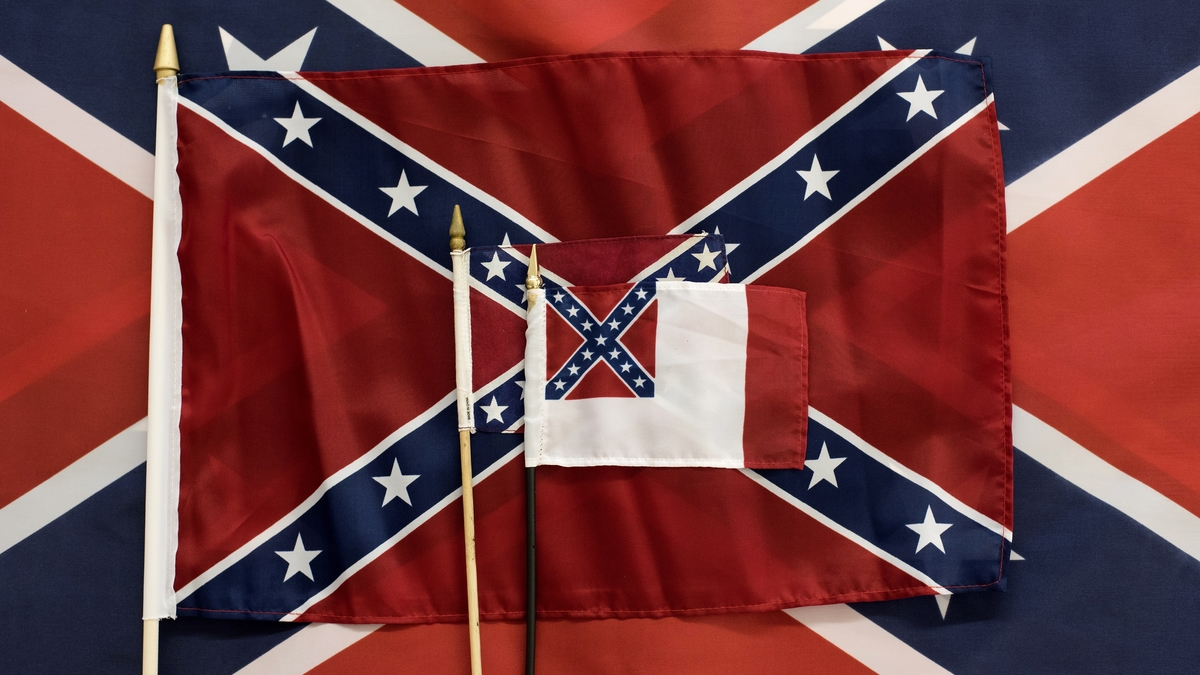In or around the second grade, my hometown school board in deep southern Virginia briefly banned confederate flag apparel — it wasn’t a moral move.
Though the symbol has long been known as a great source of discomfort for Black persons (especially Black southerners), the catalyst for the rebel flag ban was actually in response to early 90s hip-hop and Black consciousness becoming an inescapable movement in popular culture. Spike Lee’s masterpiece biopic Malcom X had hit theaters and popularized clothing with the “X” as a symbol of Black liberation. Many of the clothes featured Black liberation colors (red, black and green) or black solidarity fists. But most times, it was simply the iconic white capital X over a black background.
School administrators had initially begun writing students up who wore the trendy “X” apparel. Telling them to take it off and put on their gym shirt, suspending them if they refused. But the white administration was bested when enraged Black parents swarmed the school board meeting, pointing out that rebel flags (what Confederate flags are fondly called in the South) are freely worn in schools with zero reprimand and have been done so for generations. They asked, “Why can’t my son/daughter wear these new clothes I bought them honoring a slain Civil Rights leader?”
The administration came to what they thought was a fair and adequate compromise: both “symbols” would be outlawed.
I’m reminded of this incident in these times, as conversations surrounding the Confederacy have reached fever pitch. In response to the unarmed slayings of Black citizens like George Floyd and Breonna Taylor, wide scale demonstrations have swept the nation. Some estimate that the protests in support of the “Black Lives Matter” movement is likely the largest movement in US history, according to The Daily Mail.
All protests have begun peacefully but many instances of violence and subsequent chaos have ensued with white people, ironically, inciting lawlessness in several of these cases. In response, many states and government bodies are scrambling to appease the crowds.
Just last month, Mississippi made a historic move by voting to retire their infamous state flag which was effectively the last one to feature the Confederate seal. An uncounted amount of Black Americans have been lynched under the Mississippi flag with statistics proving that the state is considered the top site of the horrendous act; its most infamous being that of 14-year-old Emmett Till. In modern times, the site of Till’s death has become famous for being a location in which white supremacists frequent to shoot at a monument that honors him. And yet, not all Mississippi lawmakers considered the retiring of the “stars and bars” a joyous occasion.
Mississippi governor Tate Reeves stated that it was, “a solemn occasion to lead our Mississippi family to come together to be reconciled and to move on,” CNN reported.
He then assuaged the fears of those who disagreed with the flags removal by promising the emblem’s retiring would not lead to a “dangerous erasure of history.” In contrast, a Black Mississippi mayor, and native, Johnny Magee was so overcome with emotion that he nearly cried while signing the order.
Some people decided they weren’t going to wait for government intervention or permission. Many statues erected to immortalize confederate generals and slave-traders have been unceremoniously ripped from their pedestals.
In New Orleans, a bust of slave owner John McDonogh was toppled over , rolled down hill and tossed in the river. It was replaced with a colorful protest sign. In Nashville, Tennessee, Ida B. Wells critic and staunch opponent of civil rights, Edward W. Carmack’s monument was ejected. In Raleigh, North Carolina, one confederate statue was torn from its stand and hung from a lamp post for ambiance. The wave of destruction caused many states to announce the willful removal of their own shrines to white men that upheld racist and genocidal supremacy in the making of America’s racist past.
But much like my memory of the school board and their decision to ban confederate flags, none of this was done out of the kindness of anyone's heart or because of the righteous and acceptable cries from Black community members.
The school board or the (white) community didn’t care how Black students — all of whose parents grew up in the era of segregation and in the Jim Crow south — felt, just so long as they sat there uncomfortable and shut up about it. Once Black persons peacefully challenged this status quo with their own “heritage," a Black man who preached self-defense was egregiously compared to a treasonous flag that sought to uphold slavery and both were equally thrown out with the bath water.
History teaches us that collective Black rage manifested in disobedience or pointed community one-up-manship has been the only thing that has ever kept this country making half steps to a more civil, fair and peaceful union. And that’s barely so. Mississippi’s flag that sought to remind Black citizens of their place in America was commissioned in 1894 after the failed attempt at Southern secession. Does anyone believe it was amended in 2020 just because the state wanted to go in a new aesthetic direction?
With that in mind, there’s only one logical response for Black folk and advocates to cease the glorification of Black pain, anguish and blood: stay angry and stay active.
